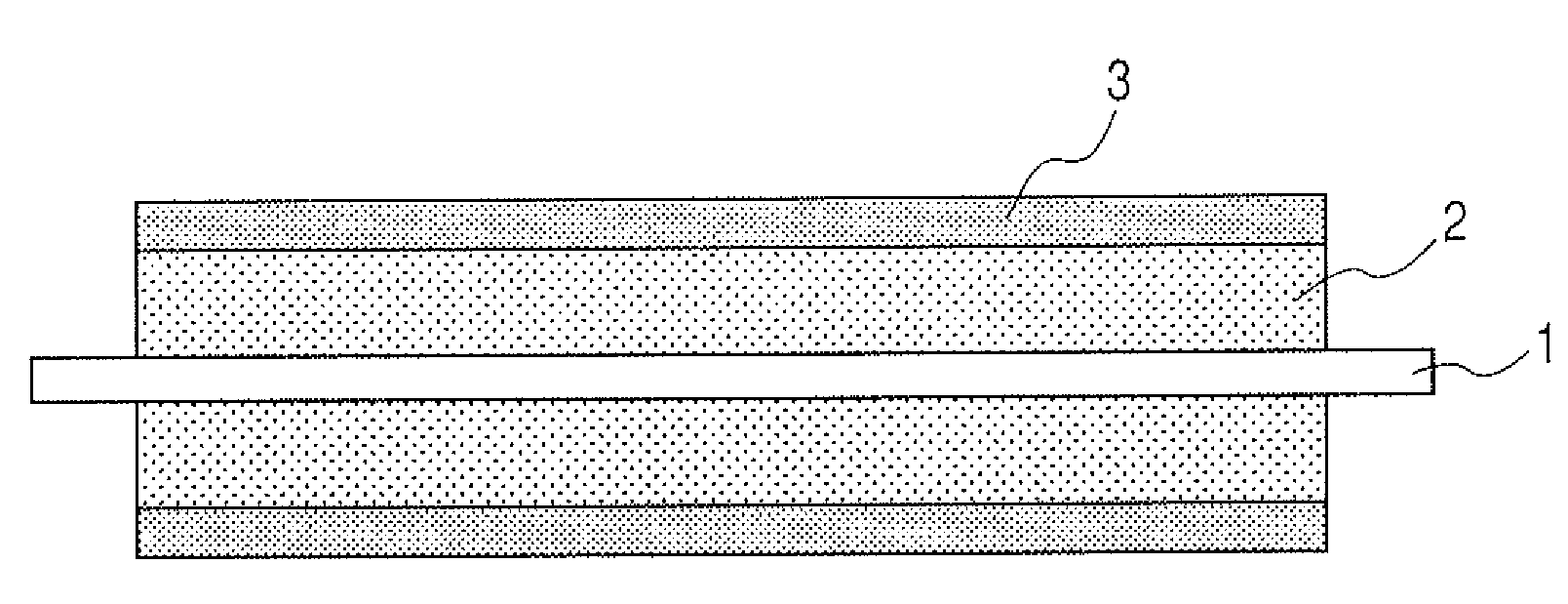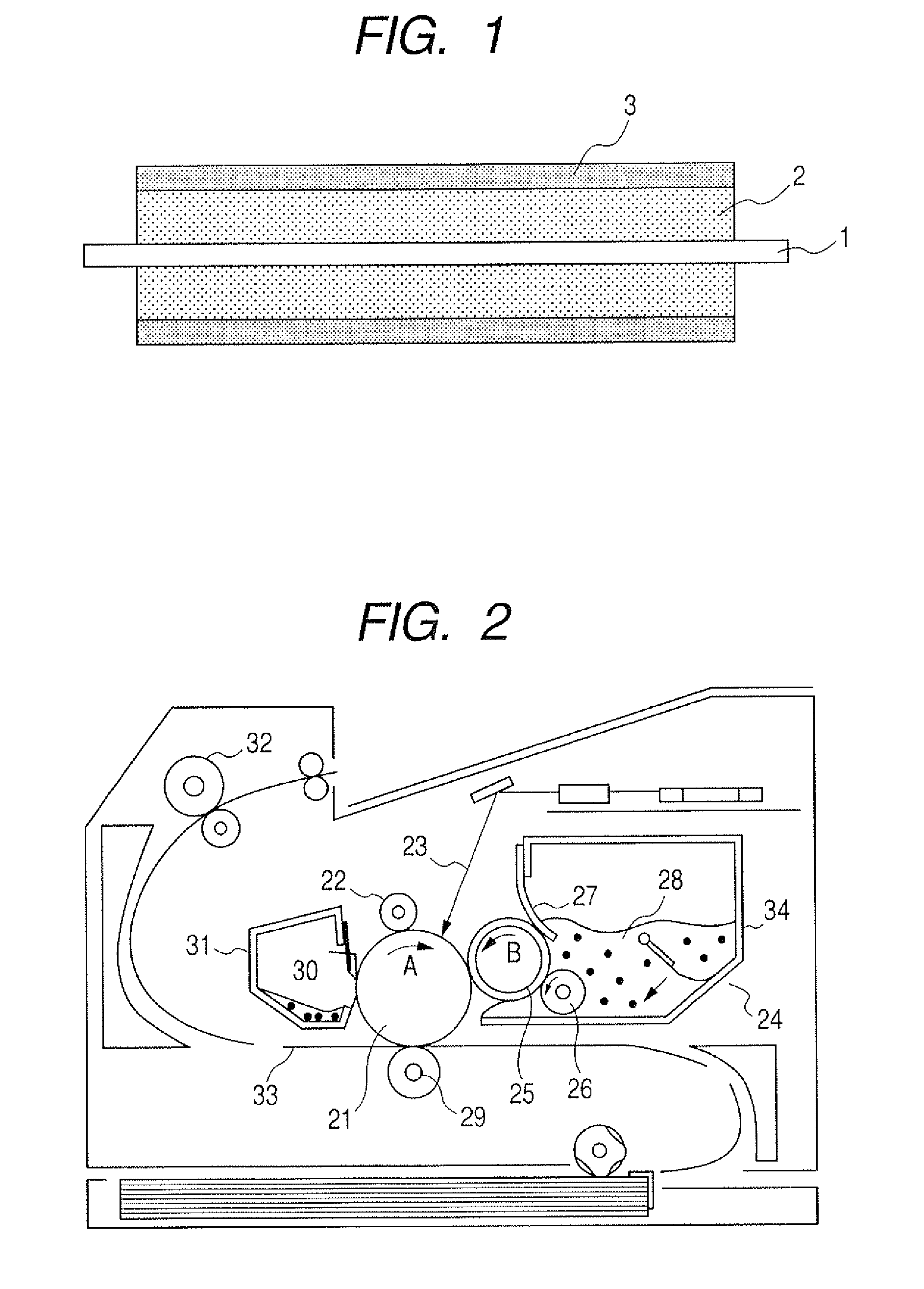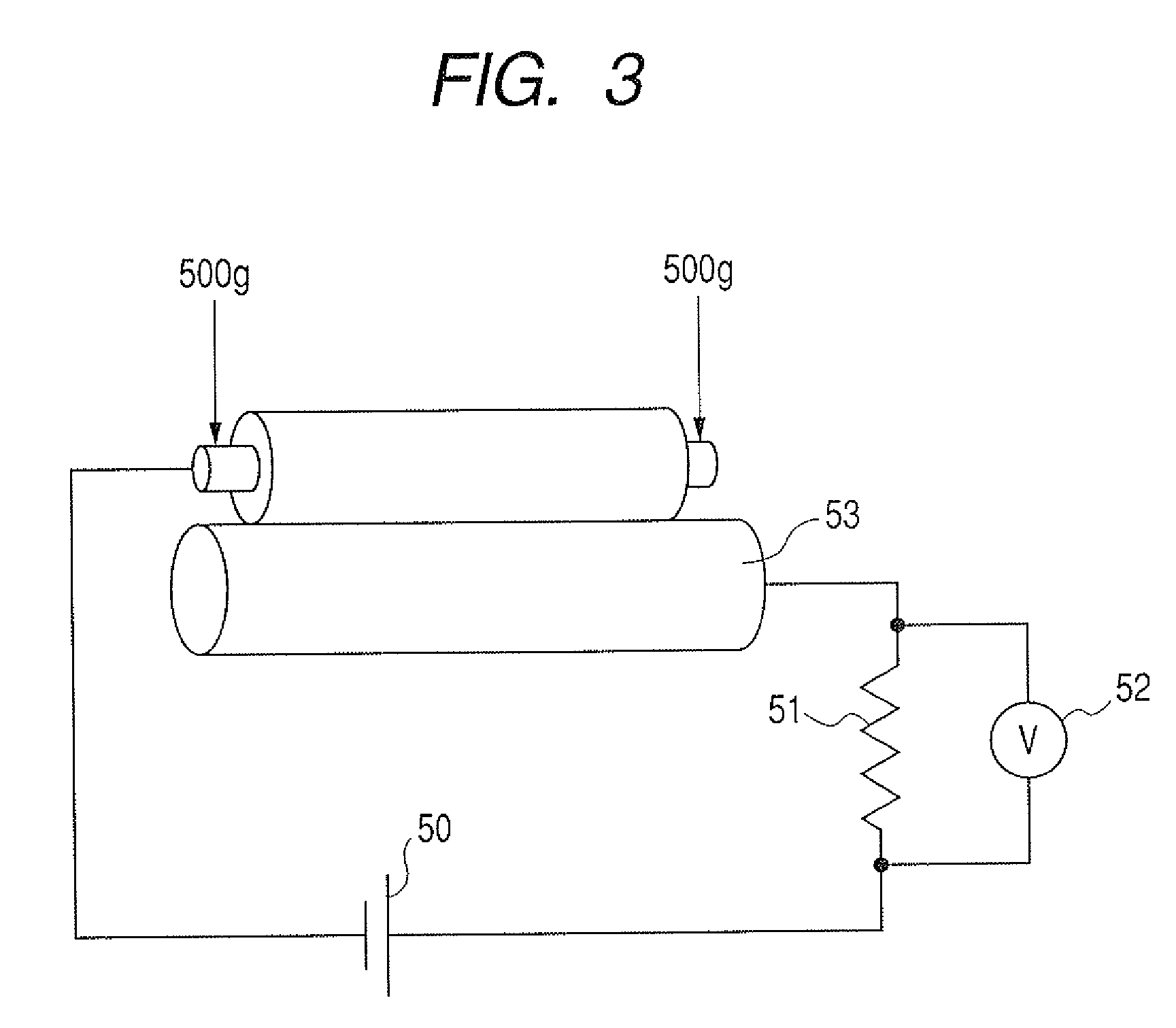Developing member with urethane resin and silicone surface layer
a technology of silicone surface layer and developing member, which is applied in the direction of instruments, electrographic process apparatus, optics, etc., can solve the problems of large friction, high tackiness, and non-uniformity of triboelectric charge quantity, and achieve the effect of lessening the occurring of banding
- Summary
- Abstract
- Description
- Claims
- Application Information
AI Technical Summary
Benefits of technology
Problems solved by technology
Method used
Image
Examples
example 1
[0133]Formation of Conductive Elastic Layer:
[0134]A mandrel (shaft member) of 8 mm in outer diameter was placed in a cylindrical mold of 16 mm in inner diameter in such a way that these came concentric with each other. As a material for forming an elastic layer, liquid conductive silicone rubber (available from Dow Corning Toray Silicone Co., Ltd.; Asker-C hardness: 40 degrees; volume resistivity: 1×107 Ωcm) was casted into the mold. After casting, this was put into an oven of temperature 130° C. to carry out heat-molding for 20 minutes. The molded product obtained was demolded, and thereafter secondarily vulcanized for 4 hours in an oven of temperature 200° C. to form a conductive elastic layer of 4 mm in thickness on the shaft member.
[0135]Preparation of Resin Layer Forming Coating Material:
[0136]The following components (a1) and (a2) were stepwise mixed in a methyl ethyl ketone solvent to carry out reaction at 80° C. for 3 hours in an atmosphere of nitrogen to obtain a bifunction...
example 2
[0146]A developing roller was produced in the same manner as that in Example 1 except that 5 parts by mass of the non-reactive silicone compound (Silicone Compound 1) used in the resin layer forming coating material was changed for 0.08 part by mass of a non-reactive silicone compound (Silicone Compound 2).
example 3
[0147]A developing roller was produced in the same manner as that in Example 1 except that 5 parts by mass of the non-reactive silicone compound (Silicone Compound 1) used in the resin layer forming coating material was changed for 0.1 part by mass of a non-reactive silicone compound (Silicone Compound 4).
PUM
 Login to View More
Login to View More Abstract
Description
Claims
Application Information
 Login to View More
Login to View More - R&D
- Intellectual Property
- Life Sciences
- Materials
- Tech Scout
- Unparalleled Data Quality
- Higher Quality Content
- 60% Fewer Hallucinations
Browse by: Latest US Patents, China's latest patents, Technical Efficacy Thesaurus, Application Domain, Technology Topic, Popular Technical Reports.
© 2025 PatSnap. All rights reserved.Legal|Privacy policy|Modern Slavery Act Transparency Statement|Sitemap|About US| Contact US: help@patsnap.com



